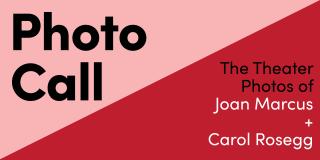The multi-media exhibition is an integral part of collaboration between The New York Public Library for the Performing Arts and Flamenco Vivo Carlota Santana. Photographs, costumes and performance regalia, film, oral histories, and the sound of castanets and taconeo will entertain and educate the visitor. Performances, film screenings, panels, and educational programs will continue through the spring and summer in the Library’s Bruno Walter Auditorium.
The exhibition has received support from the following generous sponsors:
The Gladys Krieble Delmas Foundation, Con Edison, The Committee for the Jerome Robbins Dance Division, Jerome Robbins Foundation, Consulate General of Spain, Harkness Foundation for Dance, Inc. and New York Council for the Humanities
The New York Public Library for the Performing Arts gratefully acknowledges the leadership support of Dorothy and Lewis B. Cullman. Additional support for exhibitions has been provided by Judy R. and Alfred A. Rosenberg and the Miriam and Harold Steinberg Foundation.
Spanish and Gypsy Flamenco dance and music, while imports from Spain, evolved as modern art forms in front of a New York City public, who flocked to theaters from the early 19th century to the early 21st century. Flamenco, in particular, has played a vital role in shaping culture in New York City for over 100 years. As early as 1830, Spanish dancers included New York on their tour routes from Europe to North and South America. A century later, Spanish dance, now called “Flamenco,” emerged as a modernist language in the 1910s – 1930s, making international stars of La Argentina, La Argentinita and her sister Pilar Lopez, La Meri, and Carmen Amaya. They moved from vaudeville houses to concert halls, inspiring audiences and both ballet companies and modern dancers. The male stars, Vicente Escudero, José Greco, Antonio Gades, Roberto Ximenez, and Mario Maya joined them to set masculine standards of Flamenco performance and training in New York, as political events in Spain brought many dancers and teachers to settle here. By the 1940s and 1950s, Flamenco was presented by Sol Hurok and Columbia Artists Management on their rosters of international known classical musicians and dancers. More recently, it is linked with the widespread popularity of world music. Artists, most notably Greco and Gades, were featured in Hollywood and international film. Today, resident and touring troupes have made Flamenco into one of the most popular and influential performance forms in New York.
Among the artifacts on display will be:
- Costume pieces and performance regalia, such as La Argentina’s lace mantilla and mirror and male flamenco costumes of Mariano Parra, as well as contemporary costumes from Flamenco Vivo
- Engravings of Spanish and Gypsy dance performance and venues from Spain and NYC, from 1840 - , and photographs up to the present
- Souvenir brochures and original texts for publicity for tours and NYC performances by La Argentinita, Pilar Lopez, and José Greco
- Castanets, castanet instructions and castanet recordings (of La Argentina)
- Film and video, beginning with Edison’s 1-minute film of “Carmencita” (1894), performances and demonstration films by Matteo, Escudero and La Argentina (1940 – 1960s), and moving into the present-day documentation by the Dance Division
Please note that the Vincent Astor Gallery will be close at 4:45pm on the following dates: April 23, April 25, May 1, and May 2, 2013. Thank you.
